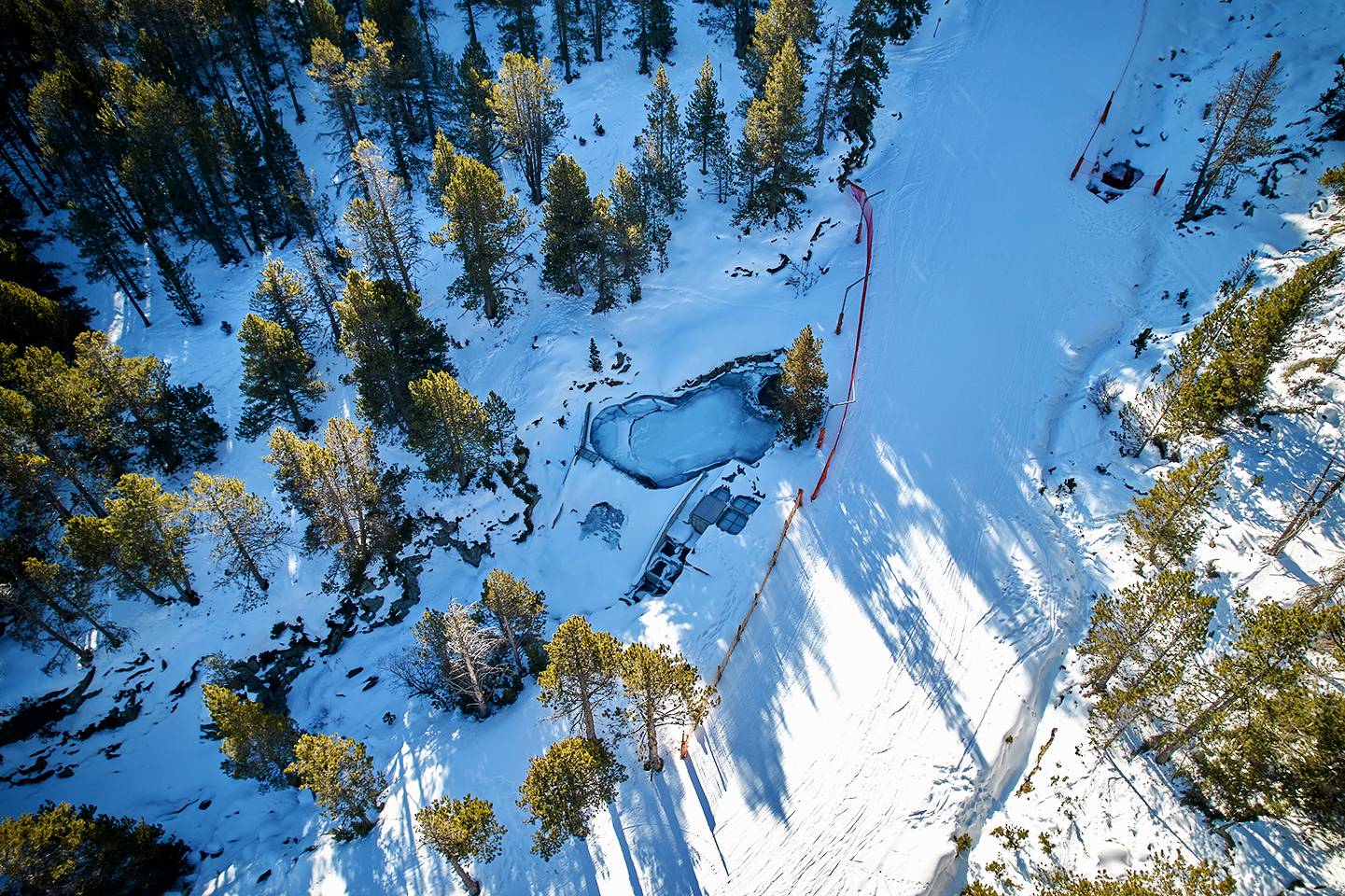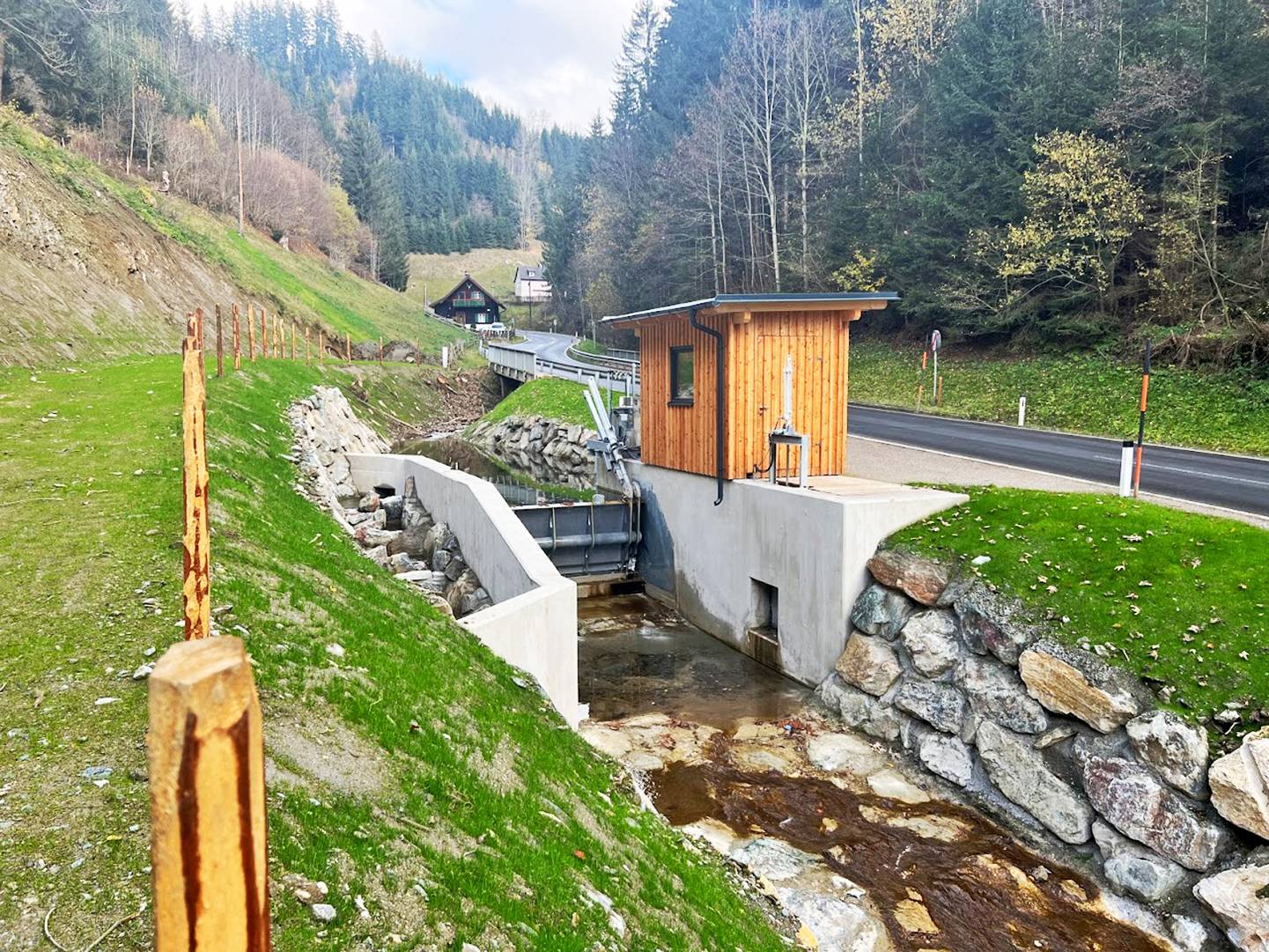Drinking water drives 10 MW turbine8 min read
Lesedauer: 6 MinutenSince 1960 power in the city of Genoa, the capital of the Liguria region in Italy, has been generated from the area’s principal drinking water line.
Up to 2,200 litres per second cascade down the 523 m head through the subterranean penstock, rushing towards a cavern to drive a Pelton turbine whose dimensions one would never associate with a regular drinking water turbine. Last year, the original 9-megawatt machine of the Canate power station was replaced with a turbine by Troyer AG, which now delivers 10 megawatts. At the same time, the control system of the facility was brought up to current standards.
There are not many seaport cities in the world that can pride themselves of a water supply system quite like that of Genoa. The “Superba”, as it is known by the locals, can tap into the copious water reservoirs of the Apennines, which stretch up to the Ligurian coast. Every year, more than 100 million cubic metres of water are distributed to Genoa’s households through a supply system with a total length of 1,700 km. The main supply line comes from Monte Antola (1,597 m), the city’s local mountain, which has a catchment area of around 25 sq km. Approximately 45 per cent of Genoa’s drinking water are drawn from its springs. The water is then transported along a 14 km aqueduct, which runs underground for the most part, to the city with its 800,000 inhabitants – to the Brugneto reservoir, to be exact. With a capacity of 25 million cubic metres, this is Liguria’s largest artificial lake. The Brugneto reservoir is situated at an altitude of 775 metres, whereas the city of Genoa is more or less on sea level. The rather significant drop and huge body of water suggested the idea of making additional use of these conditions by generating hydropower. As a result, two power stations were erected in 1960, a smaller one at the foot of the Brugneto reservoir dam, which delivered approximately 1.4 MW, and a larger one at the Canate centre, which provided 9 MW. Together with a third, much smaller facility at Quezzi, which has an installed capacity of 110 kW, the three power stations have so far been producing between 35 and 40 million kWh a year.
A TECHNICAL TRIUMPH
The operator of the facilities is Mediterranea delle Acque S.p.a., a firm of the exchange listed IREN Group. Mediterranea delle Acque was the result of a merger between the traditional waterworks of Genova Acque, Acquedotti de Ferrari Gelliera, and Acquedotto Nicolay in 2006. Until then, Genova Acque had been responsible for operating the Brugneto reservoir and the three power stations. The construction of the facilities in 1960, especially the Canate power station, was at the time considered a huge technical accomplishment. A subterranean tunnel of almost 1,700 m had been drilled into the mountain to accommodate a steel penstock with a diameter of 900 mm. The machine cavern, which can be accessed by way of a slightly sloping shaft, is located around 200 m inside the mountain. Roughly the size of a school gym and sitting at an altitude of 165 m above sea level, the cavern houses the machines, the pipe breakage protection system, and a small central control station. Water that has passed the machines is transported from the turbine to a reservoir with a capacity of around 9,000 cubic metres. In the so-called Prato pool, the water is then disinfected, treated with ultraviolet light and purified for subsequent distribution through the city’s water supply network.
NOT A “REAL” DRINKING WATER POWER PLANT, STRICTLY SPEAKING
“So, strictly speaking, the Canate power station isn’t really a ‘drinking water power plant’, because the water is processed and purified for drinking after the turbine stage. Otherwise it would most likely be Italy’s largest drinking water power plant,” says project leader Fabiano Bressane of Troyer AG. “But this meant we didn’t have to meet any special requirements for the protection of drinking water – things like coating the Pelton turbine with food colouring, for example.” The Pelton rotor had been turning for more than fifty years, driven by the drinking water from the Brugneto reservoir, when the operators of Mediterranea delle Acque S.p.a. initiated the reconstruction project. Key elements of the project included the replacement of the turbine and generator, and the integration of a modern control system. The task and project size perfectly matched the service portfolio of long-standing specialist Troyer AG, which is headquartered in Sterzing in Italy’s South Tyrol province. As winners of the EU-wide tender, the hydropower experts received the official order in 2010
SPECIAL SOLUTIONS INCLUDED
February 2011 marked the preliminary end of power generation at the Canate power station. Once the old machines were dismantled so preparations for the installation of the new ones could begin. “Although the rotor with its 1,240 mm pitch circle diameter was quite large, that didn’t pose a problem at any stage of the installation process. Constructing the turbine housing, on the other hand, was a bit tricky. To be able to adapt it to the existing constructional conditions we needed a special construction with an intermediate frame,” explains Fabiano Bressane. The Troyer engineers also had meet a few special requirements imposed by their Genoese customer. As Bressane recalls, “For example, it was important to the operators that the machines should be fitted with a mechanical centrifugal pendulum. Basically, this counteracts a possible overspeed of the shaft by a kind of stopper that is ejected from a suspension system by the centrifugal force if the rotational speed gets too high. Although the principle behind this system is mechanical, the actual braking process is done electronically. It comes as no surprise, then, that an experienced power station operator would want a system like that for their new machine. Another example would be the water cooling for the generator. The customer wanted cooling to be performed with freshwater drawn from the lower reservoir to create an open cooling circuit. They wanted to be able to rely on a proven method.”
TURBINE STANDSTILL DURING THE NIGHT
Troyer AG’s turbines are highly proven as well. The two-jet Pelton turbine for the Canate power station was designed for a net head of 523 m and a design flow rate of 2,000 l/s plus 10 percent overload. At 10 MW the capacity tops that of the old machine considerably. Even taking into account the excellent efficiency rate of the new turbine, which has been proven by the use of a thermodynamic measuring by an external institute, this leap in performance is rather astonishing. After all, the hydrological conditions as such had been left completely unchanged. However, between the use as drinking water and power generating water, the drinking water supply always takes precedence. Electricity production therefore depends on the supply of drinking water that happens to be available at any given time. In practice, the power station is deactivated overnight and used to generate power during the day, depending on the city’s drinking water requirements. If and when possible, the Brugneto reservoir is filled during the night. During daytime, the water is drained again. When there is an oversupply of water, there is the option of carrying on energy production even when the lower reservoir is full. In that case, the water can be drained off once it has passed the power station.
PROFESSIONAL INSTRUMENTATION AND CONTROL SOLUTION
Apart from the replacement of the machines, the operators’ focus was primarily on the installation of up-to-date instrumentation and controls. This was because operations at the power plant had required a lot of effort and manpower in the past. “During the first few years, there were twelve machine engineers working at the plant, six at the turbines and six at the control desk. This was the reason why the cavern was fitted with windows and equipment providing artificial daylight. Back then, almost everything had to be done manually. This included synchronisation. During the first decades, they used a special, fully hydraulic rotational speed control for that,” explains Bressane. A significant improvement was achieved only when, a few years ago, a line could be installed to transmit the necessary control signals from the inside of the mountain to the central control room. “At this point, the top priority for the operators was to finally have a professional up-to-date control solution installed. I think we have managed to do that quite nicely,” says Bressane. Even though the operator decided not to require a comprehensive visualisation solution, it is now possible to read out all relevant system parameters via the central control room and even remote-control the fully automated power station facility. The new equipment is also capable of stand-alone operation – a feature the operator had sorely missed in the old system. In case of a power failure, the machines automatically switch to stand-alone mode to prevent downtimes.
SAFE OPERATION FOR DECADES TO COME
Electricity production at the Canate centre was suspended for six months, from February until end of July 2011. With the successful start-up of the new facilities in July last year, the time for the next machine generation has begun. This new-generation technology not only improves performance but will also ensure high availability and safe operation for several decades, thanks to the solution’s high quality standard. Obviously, the boost in capacity to 10 MW is expected to enable a strong increase in the plant’s annual energy production. In addition to an excellent drinking water supply, Italy’s famous seaport is therefore also blessed with a highly unusual but highly efficient way of making additional hydroelectric use of it.
Share:


